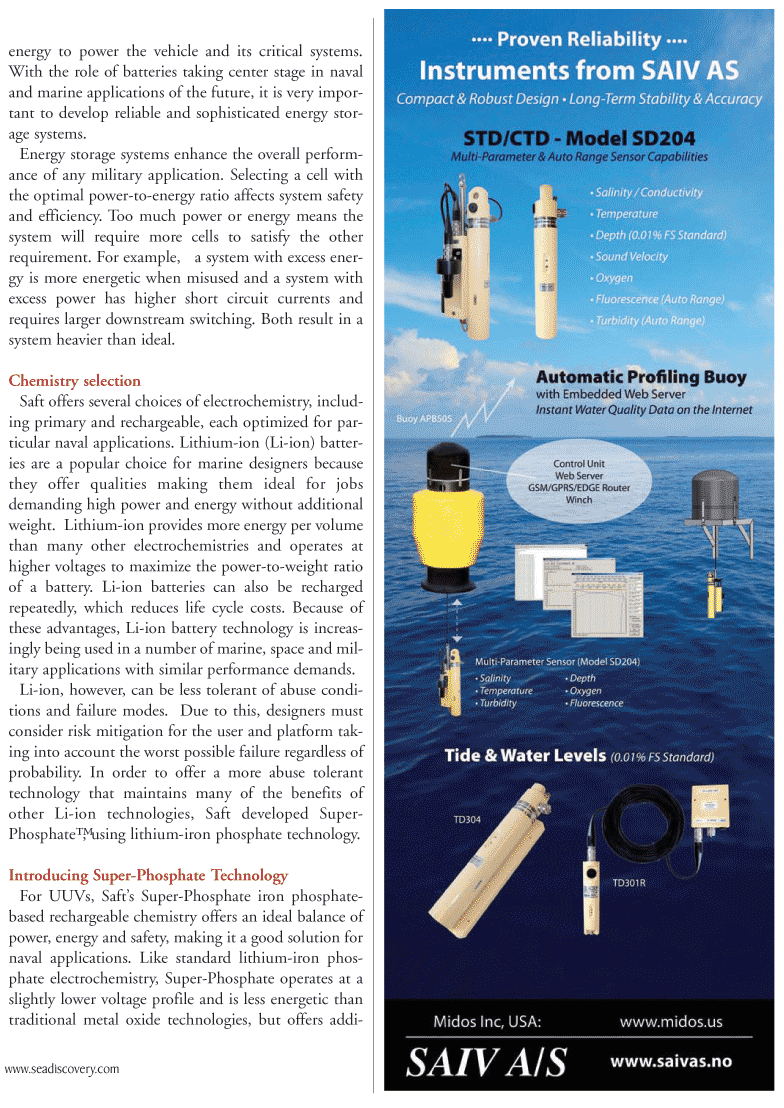
Page 45: of Marine Technology Magazine (March 2011)
Subsea Vehicles: AUV, ROV, UUV Annual
Read this page in Pdf, Flash or Html5 edition of March 2011 Marine Technology Magazine
www.seadiscovery.com energy to power the vehicle and its critical systems.
With the role of batteries taking center stage in naval and marine applications of the future, it is very impor- tant to develop reliable and sophisticated energy stor- age systems.
Energy storage systems enhance the overall perform- ance of any military application. Selecting a cell with the optimal power-to-energy ratio affects system safety and efficiency. Too much power or energy means the system will require more cells to satisfy the other requirement. For example, a system with excess ener- gy is more energetic when misused and a system with excess power has higher short circuit currents and requires larger downstream switching. Both result in a system heavier than ideal.
Chemistry selection
Saft offers several choices of electrochemistry, includ- ing primary and rechargeable, each optimized for par- ticular naval applications. Lithium-ion (Li-ion) batter- ies are a popular choice for marine designers because they offer qualities making them ideal for jobs demanding high power and energy without additional weight. Lithium-ion provides more energy per volume than many other electrochemistries and operates at higher voltages to maximize the power-to-weight ratio of a battery. Li-ion batteries can also be recharged repeatedly, which reduces life cycle costs. Because of these advantages, Li-ion battery technology is increas- ingly being used in a number of marine, space and mil- itary applications with similar performance demands.
Li-ion, however, can be less tolerant of abuse condi- tions and failure modes. Due to this, designers must consider risk mitigation for the user and platform tak- ing into account the worst possible failure regardless of probability. In order to offer a more abuse tolerant technology that maintains many of the benefits of other Li-ion technologies, Saft developed Super-
Phosphate™, using lithium-iron phosphate technology.
Introducing Super-Phosphate Technology
For UUVs, Saft’s Super-Phosphate iron phosphate- based rechargeable chemistry offers an ideal balance of power, energy and safety, making it a good solution for naval applications. Like standard lithium-iron phos- phate electrochemistry, Super-Phosphate operates at a slightly lower voltage profile and is less energetic than traditional metal oxide technologies, but offers addi-

 44
44

 46
46
